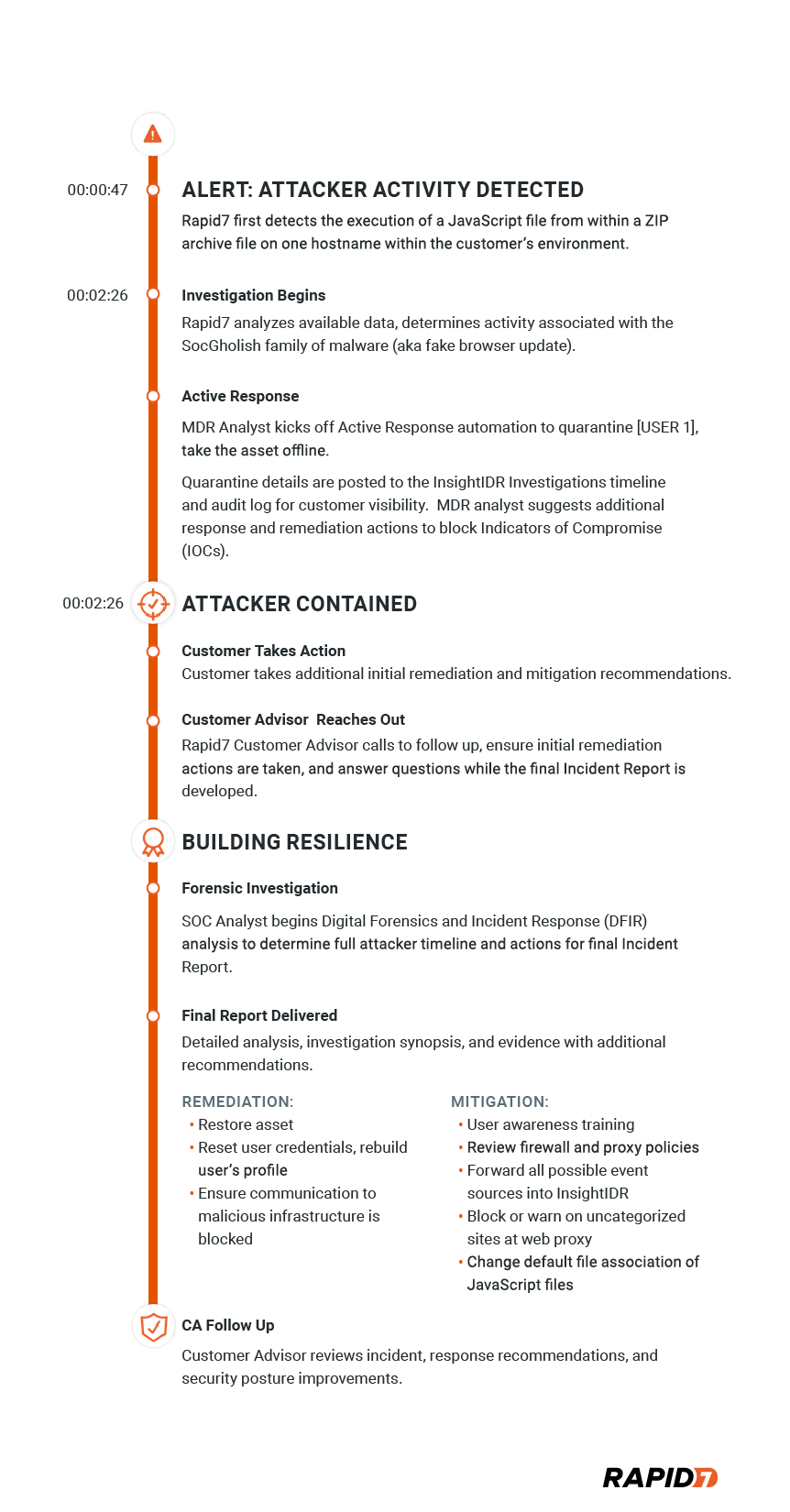Post Syndicated from Rapid7 original https://blog.rapid7.com/2024/02/07/5-insights-from-the-latest-cybersecurity-trends-research/

Rapid7 is committed to promoting research that identifies the latest cybersecurity trends so that organizations can leverage these insights and create programs that make sense for the modern SOC. To that end, we’ve singled out five quick insights security professionals and stakeholders should consider when looking ahead. These findings are based on Top Trends in Cybersecurity for 2024, a new research report from Gartner®.
Organizations Will Focus on Improving Resilience
As cloud continues to be adopted at a frenzied pace across organizations large, small, and everything in between, it’s critical to maintain organizational resiliency as attack surfaces expand and security becomes more urgent than ever. Indeed, the research notes that: “Improving organizational resilience has become a primary driver of security investments for several interconnected reasons:
- “Digital ecosystems continue to sprawl, due to increasing cloud adoption.
- Organizations are entrenching hybrid work arrangements.
- The threat environment continues to evolve as emerging capabilities also embolden attackers.”
Continuous Threat Exposure Management Programs Will Take Off
Organizational attack surfaces have expanded for many reasons: the adoption of SaaS, remote work, custom application development, and more. All of these changes are efficiency drivers for businesses, but can also become liabilities rife with vulnerabilities. As organizations put more products and policies into place – especially from multiple vendors – it can become more difficult to manage this new attack surface at scale.
The research stipulates that, in order to try and solve this issue, “security and risk management (SRM) leaders have introduced pilot processes that govern the volume and importance of threat exposures and the impact of dealing with them with continuous threat exposure management (CTEM) programs.” Short-term remediations can only go so far; the game is accelerating and long-term solutions must be put into place.
Generative AI Will Inspire Long-Term-Yet-Cautious Hope
Security organizations are embracing generative AI (GenAI) to help gain visibility across hybrid attack surfaces, spot threats fast, and automatically prioritize risk signals. In other sectors, unmanaged and uncontrolled uses of GenAI need reigning in before they can cause real societal damage with things like deepfakes, misinformation, and copyright infringement.
The research states that “the most notable issues were the use of confidential data in third-party GenAI applications and the copyright infringement and brand damage that could result from the use of unvetted generated content.” As AI companies continue to release new products that are more readily customizable by developers, laws and security policies will need to be put into place to curtail this potential third-party threat.
The C-Suite Communications Gap Will Narrow
With clearer outcome-driven metrics (ODMs) comes the ability to more easily convince the boardroom that direct investment in a cybersecurity initiative is imperative. Indeed, CISOs and other key security personnel and stakeholders have for years been running up against budgetary pushback that all too often leads to a porous attack surface as well as the inability to properly respond or prepare.
According to the research, “the 2023 Gartner Evolution of Cybersecurity Leader Survey asked chief information security officers (CISOs) the following question: ‘What has been the impact of changing business objectives on your cybersecurity strategy?’ In response, 60% said there had been some impact or a major impact.” When goals and/or key performance indicators (KPIs) shift, the security organization must be able to readily communicate where potential risk could lie in the changed environment.
ODMs can create a clearer path for security. From the report:
- “Explain material cyber incidents to executives and guide specific investments to remediate them.
- Support transparency to educate executives, lines of business and corporate functions about inappropriate or cavalier risk acceptance.
- Expose matrixed management problems, such as the role the IT team plays in patching problems for which the security organization is typically held accountable.”
Cybersecurity Reskilling Will Help to Future-Proof
There is a continuing cybersecurity talent gap and, at the same time, there seems to be a shift in the types of skills practitioners need to bring to the job. Think of the implications this “moving target” has on both security organizations and people strategy teams tasked with scouring the marketplace for this magical unicorn.
The report details how, “in the U.S. alone, there are only enough qualified cybersecurity professionals to meet 70% of current demand – an all-time low over the past decade.” A plethora of trends are leading to this current disparity, including: accelerated cloud adoption, the emergence of GenAI, threat-landscape expansion, and vendor consolidation.
Greater business acumen as well as AI ethics and human psychology are just a few of the soft skills that will come to have greater prominence in job descriptions of security talent. Indeed, this may signal a stronger coming partnership between talent acquisition teams and security teams so that all parties involved can be sure that the right talent is recruited in the best way possible.
Read the report here.
Gartner, Top Trends in Cybersecurity for 2024, Richard Addiscott, Jeremy D’Hoinne, et al., 2 January 2024
GARTNER is a registered trademark and service mark of Gartner, Inc. and/or its affiliates in the U.S. and internationally and is used herein with permission. All rights reserved.




